June 19, 2025 | 02:08 GMT +7
June 19, 2025 | 02:08 GMT +7
Hotline: 0913.378.918
June 19, 2025 | 02:08 GMT +7
Hotline: 0913.378.918

Mr. Pham Duc Chinh, Director of the Market Management Department of Long An Province, and Permanent Secretary of National Steering Committee 389 of Long An Province. Photo: Le Hoang Vu.
Sir, how has the situation of smuggling pigs from the neighboring country Cambodia into the Long An province been recent?
According to reports from the Border Guard Control, the situation of pig smuggling across the border in the province still occurs at certain times, mainly emerging along the border area of Hung Dien commune in Tan Hung district. The number of smuggled pigs is small (3-5 pigs per instance) and irregular. No such incidents have been reported in other border areas.
The modus operandi of this activity involves exploiting the cover of darkness, favorable terrain, and narrow sections of the Cai Co River that can be crossed by boats or makeshift vessels at any point, and utilizing sparsely populated areas for crossings. Exploiting this situation, the smugglers establish connections with individuals in Cambodia, hire local border residents, divide the smuggled pigs into groups of 3-5 pigs each, and transport them across the border river to assembly points. Once there, they obtain counterfeit documents to legitimize the pigs as domestic livestock. Subsequently, the smugglers rapidly use automobiles for inland transportation and distribution. The transportation process is tightly organized and guarded to avoid detection and apprehension.
From May until now, the Provincial Border Guard Control and relevant authorities have intensified inspection and combat efforts, resulting in a gradual reduction in the pig smuggling situation across Tan Hung district’s area. By the beginning of August, this activity has ceased in the region.
Through investigations by the relevant agencies, there are currently two pig collection points within Tan Hung district (one based in Hung Dien commune and the other in Hung Thanh commune). These two collection points are located 3 to 20 kilometers from the Cambodian border.
These two collection points have a total of 17 pig pens, with each pen having the capacity to house around 70 pigs. The quantity of pigs collected and sold from the beginning of 2023 until July 12, 2023, is as follows: Mr. Nguyen Van Cuong’s pig collection facility received 4,175 pigs, of which 2,758 were sold to other provinces, and 1,408 were consumed within the province. Mr. Trang Thai Ho’s pig collection facility received 1,953 pigs, with 1,811 being sold to other provinces and only 133 being consumed within the province.
Based on statistics, it can be stated that the two aforementioned pig collection facilities mainly source pigs from provinces such as Lam Dong, Dong Nai, Binh Duong, Binh Phuoc, Binh Thuan, Ba Ria - Vung Tau, and Tay Ninh (with no local pig source within the province).
As for the pigs at these collection facilities, a portion is sold to traders who transport them to slaughterhouses located in districts such as Tan Hung, Moc Hoa, Vinh Hung… The remaining portion is transported by facilities registered for animal quarantine inspections to leave the provincial area. These pigs are then sent to other provinces for consumption, including An Giang, Kien Giang, Tien Giang. The location of these collection facilities is strategically near the border, and they have established routes that pass through Hong Ngu district (Dong Thap) to An Giang province, approximately 35-50km away, and through Cai Lay (Tien Giang), approximately 70-80km away.
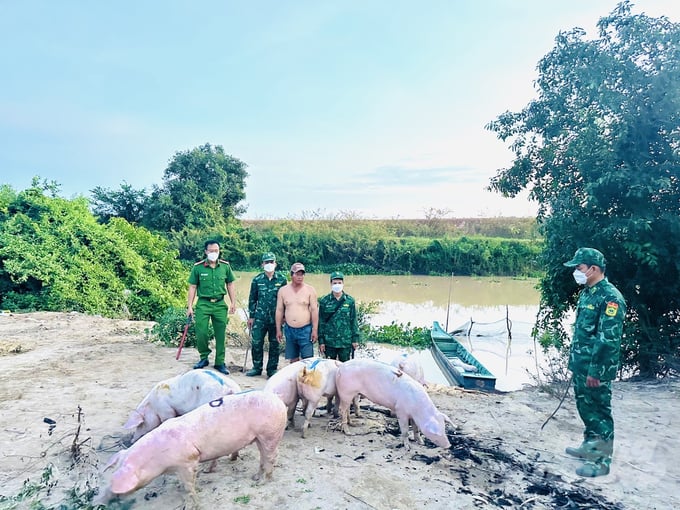
The functional forces of Long An Province apprehending illegally smuggled pigs across the border. Photo: Le Hoang Vu.
Therefore, how has National Steering Committee 389 of Long An Province, along with the border districts, concentrated their efforts and taken strict actions to address the issue of illegal pig smuggling across the border, sir?
In accordance with the directive from the Ministry of Agriculture and Rural Development, the provincial People’s Committee, and National Steering Committee 389, on July 25, 2023, Directive No. 75/BCD-QLTT was issued. This directive requested the Border Guard, Police, Market Management, and the border districts’ National Steering Committee 389 to concentrate their forces and take decisive actions to eradicate the problem of illegal pig smuggling across the border.
Regarding the results of the detection and handling of unauthorized pig smuggling, from the beginning of 2023 until now, the Border Guard and Police forces have discovered and apprehended 5 cases of illegal smuggling involving buffaloes, cattle, and pigs. A total of 68 pigs and 26 cattle were seized for disposal. Administrative fines were imposed on 4 individuals, totaling 27 million VND, and legal proceedings were initiated against 3 suspects.
Among these cases, the Border Guard forces detected, apprehended, and handled 3 cases involving 3 individuals transporting pigs across the border. The confiscated items included 23 pigs and 5 cattle. Administrative fines were imposed on 3 individuals, totaling 19 million VND.
In the case of the Police force, they have detected and apprehended 2 cases of illegal smuggling involving buffaloes, cattle, and pigs. A total of 45 pigs and 21 cattle were seized for disposal. An administrative fine was imposed on one individual, amounting to 8 million VND, and legal proceedings were initiated against 3 suspects. With the coordination of the Border Guard forces (Song Trang Border Guard Station), 2 cases were apprehended, resulting in the confiscation of 15 pigs and 5 cattle.
The specific cases are as follows: Case 1, on December 22, 2022, the PC05 Division in coordination with the Song Trang Border Guard Station apprehended 15 pigs. The suspect fled to Cambodia and could not be captured, resulting in the disposal of 15 pigs. Case 2, on February 24, 2023, the Police in Vinh Hung District apprehended 45 pigs, initiated a case, and began legal proceedings against 3 suspects. The pigs were subsequently disposed of. Case 3, on April 25, 2023, the PC05 Division in coordination with the Song Trang Border Guard Station apprehended 5 cattle. An administrative fine of 8 million VND was imposed on one individual, and the 5 cattle were disposed of. Case 4, on July 11, 2023, the Police in Vinh Hung District apprehended 21 cattle along with 2 suspects, who were handed over to the Tan Hung District Police for jurisdiction.
Furthermore, the Police force conducted inspections and detected 2 individuals (business households) engaged in slaughtering livestock in violation of environmental protection laws. These individuals had not obtained the necessary approval from the authorized agency for their environmental impact assessment reports; they also discharged wastewater exceeding environmental standards and improperly disposed of waste materials. The Provincial People’s Committee was consulted, and a fine of 356.5 million VND was imposed on one case (another case is currently completing the necessary documentation for consultation on imposing fines according to regulations).

Illegally smuggled pigs from the Cambodian border into the Long An area have been captured by the relevant authorities and taken for disposal. Photo: Le Hoang Vu.
The Vietnam - Cambodia border route within the province of Long An stretches for approximately 135 kilometers. Hence, what challenges are encountered in preventing smuggling, particularly of pigs?
The border section in Hung Dien commune, Tan Hung district is long and covers an expansive territory. The border river is narrow, about 10 meters wide, and the population density is low, with remote and sparsely populated areas. This region has minimal human traffic and is thinly staffed, bordering on Tan Hong district (Dong Thap province). Consequently, this situation is conducive to the activities of various actors and presents some difficulties for inspection, control, detection, apprehension, and mobilization of forces for capturing those engaging in smuggling pigs across the border.
Smugglers take advantage of the policy promoting livestock development to legitimize forged documents for illegally imported pigs, effectively transforming them into domestic pigs. This process creates considerable challenges during inspections, seizures, and legal proceedings.
Regarding the management of collection centers, breeding stations, and veterinary offices at the district level, the identification of the quantity and origin of pigs is based on the records received from these establishments, following the regulations (with certificates of inspection from other provinces). It’s difficult to detect cases of deceit or fraud if the establishments intentionally violate regulations. The transportation and consumption of pigs within the province are not declared or subjected to inspections according to current regulations. This provides an opportunity for traders to exploit the situation and transport smuggled pigs.
The Vietnam - Cambodia border route within the province of Long An is about 135 kilometers long, encompassing many areas with contiguous land, numerous paths, and open routes that are favorable for those who exploit the free-ranging livestock activities of local residents along the border area for smuggling cattle and buffaloes. This presents challenges in providing evidence of smuggling activities for legal processing in accordance with the regulations and laws.
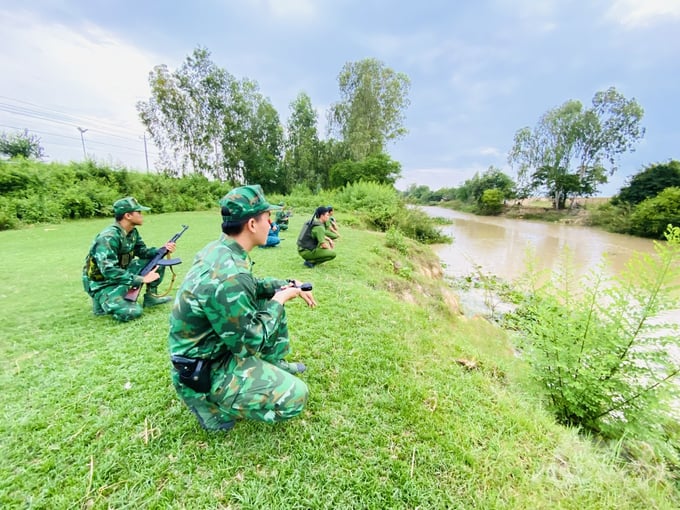
The Border Guard unit in Song Trang, Tan Hung District, has intensified patrols, controls, and prevention of illegal trading and transportation of pigs, other livestock, and livestock products across the border. Photo: Le Hoang Vu.
What recommendations do you have for the higher-level leadership?
As the Permanent Secretariat of National Steering Committee 389, I suggest that the People’s Committee of Long An Province direct the People’s Committees of border districts to concentrate their forces on inspecting, controlling, and preventing illegal trading and transportation of pigs and other livestock and livestock products across the border. It is essential to have statistical data on livestock and poultry herds within the area, particularly in the communes that share a border with Cambodia, in order to promptly detect any fluctuations or unusual increases in the number of livestock and poultry herds.
Direct the Border Guard forces to intensify patrols and control along the border area’s pathways and openings, focusing on decisively handling cases of smuggling and unauthorized transportation of pigs across the border, following the guidance of the Ministry of Agriculture and Rural Development.
Instruct the Police forces to establish specialized operations, vigorously combat and handle cases of smuggling of cattle, buffaloes, and pigs, aiming to legitimize them either through the collection points along the border route or integrating them into livestock herds belonging to local residents on both sides of the border.
Guide the Department of Agriculture and Rural Development to collaborate with local authorities, compile statistics on the number of livestock and poultry herds within the province, especially those in border districts, as well as the number of organizations and individuals allowed to import pigs, and centralized quarantine points for imported pigs. This information should be shared with relevant authorities to formulate strategies for inspections, controls, and traceability of the origin of livestock in case of any violations.
Thank you!
Translated by Nguyen Hai Long
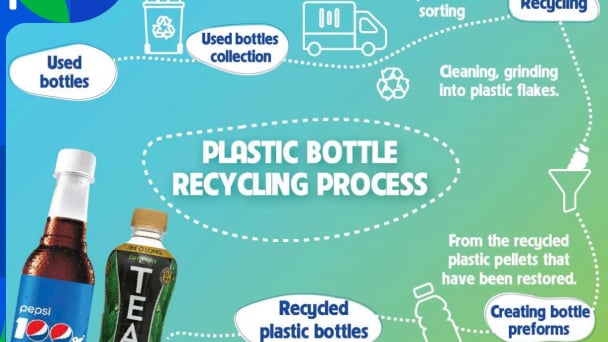
(VAN) To address plastic pollution, closing the plastic recycling cycle will bring significant economic and environmental benefits.
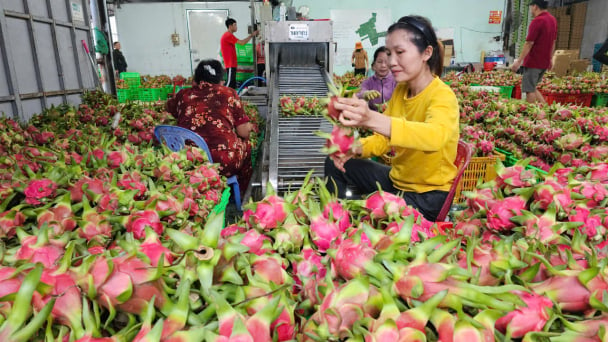
(VAN) According to the Binh Thuan Department of Industry and Trade, in the first five months of 2025, Binh Thuan's dragon fruit export turnover increased by 20.65% compared to the same period last year.
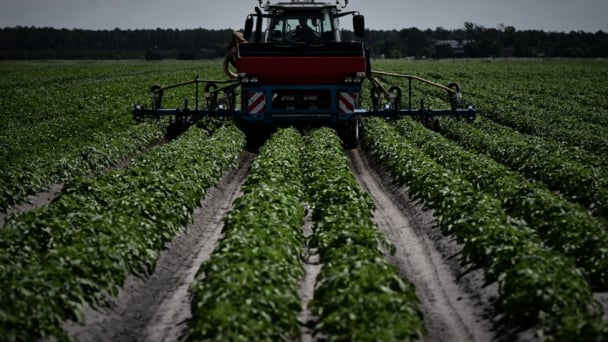
(VAN) EU countries on Thursday gave final approval to new tariffs on fertilizer imports from Russia, a move aimed at cutting off revenue that could support Moscow’s war in Ukraine, despite concerns from European farmers.

(VAN) The working delegation from the Ministry of Agriculture and Environment conducted an important trip to the Netherlands to strengthen strategic partnerships and sustainable development in the agricultural sector.

(VAN) The letter ‘A Plea from the Ocean’ not only evokes emotion but also awakens the human conscience to the responsibility of protecting life on Earth.

(VAN) The Department of Agriculture in South Africa has announced the country’s first mass vaccination of poultry to prevent local birds from contracting avian influenza.

(VAN) Establishment of the Mekong Delta Regional Agricultural Linkage Center, aiming for a closed value chain, deep processing, trading platforms, and international market connectivity.